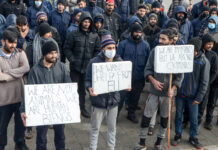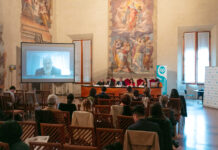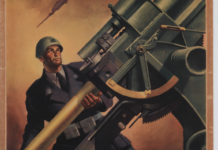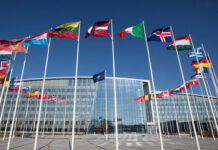Latest developments
At the end of November 2023, the head of the UN mission in South Sudan (UNMISS), Nicholas Haysom, stated that “the country is not yet ready for elections,” scheduled for the end of 2024. The continued postponement of general elections (Presidency, Assembly, Governorates) is due to the lack of necessary experience in a country that suffers from an almost complete absence of infrastructure, has many years of war behind it, and is experiencing an escalation of violence on the peripheries, where competition for candidacies ahead of the vote has already begun. The Commission for the registration of political parties was only established in November 2023. South Sudan is also supposed to revise the Constitution, as established by the 2018 Peace Agreement. The only party truly active at the moment is the Sudan People’s Liberation Movement (SPLM) of President Salva Kiir, elected in 2010 when the South was still part of Sudan and who has already begun his electoral campaign.
This situation is complicated by the arrival, during 2023, of approximately 330,000 refugees and asylum seekers, mainly Sudanese. The country already has 2 million internally displaced persons due to conflict, food insecurity, and the impact of climate change. Additionally, over 500,000 South Sudanese refugees have returned. South Sudan is thus experiencing the largest migration crisis in Africa, while over 2.3 million South Sudanese refugees are hosted in neighboring countries (Ethiopia, Kenya, Sudan, and Uganda).
“Intercommunal conflicts and abuses by security forces and armed groups continue to exact a terrible toll on civilians,” writes Human Rights Watch. Sexual violence against women and girls (including conflict-related) is extremely widespread, with few perpetrators brought to military or civilian courts. The humanitarian situation remains disastrous: the United Nations declares that food insecurity is the worst since the country’s independence. Following the escalation of tensions and clashes between the armed forces responding to the President (SSPDF) and the Sudan People’s Liberation Movement/Army in Opposition (SPLM/A-IO), President Salva Kiir and the first vice president and leader of the SPLM/A-IO, Riek Machar Teny Dhurgon, agreed in April 2023 to accelerate the integration of their armies as envisaged by the 2018 Peace Agreement. But even this process has so far progressed very slowly.
What are they fighting for?
South Sudan was born on 9th July 2011 following a referendum. Two years later, in December 2013, it plunged into one of the bloodiest civil wars ever seen. Initially, the opposing fronts were those of President Salva Kiir and his former vice president Riek Machar, respectively of Dinka and Nuer ethnicity, the two largest in South Sudan.
These war fronts remain the main ones, to which other ethnic groups and factions controlling portions of territory throughout the country have been added. South Sudan is the youngest state in the world, and for this reason, its position in international and regional balances is still to be defined.
In the united Sudan, the main wealth, namely oil, had an outlet, the Port Sudan terminal on the Red Sea, and the pipelines of the Khartoum Regime that transported it. Today, South Sudan risks being an oil bubble in the middle of Africa without terminals, investments, equipment, and technologies to exploit that enormous wealth.
This is the main economic stake of the war, to which are added those of the water resources of the Blue Nile water and the precious teak wood, the valuable wood from the country’s plantations and forests.
Country Overview
South Sudan seceded from Khartoum through the 2011 referendum, after almost fifty years of wars. The Peace Treaty between the two states had set stages in the southern region’s separation process. Following a five-year transition period, during which Juba would enjoy extensive autonomy, the referendum on self-determination took place, with 98.83% of voters expressing support for secession.
The new state is not only crippled by conflict but also by prolonged famines, a condition that has resulted in 2 million deaths and 4 million refugees and internally displaced persons. Infrastructure is nearly completely destroyed. Added to this is a weak social state that must address several humanitarian emergencies. The first is the return home of 350,000 South Sudanese. Then, ethnic conflicts erupted between 2012 and 2013, especially in the Jonglei region.
The ensuing civil war cost the lives of 400,000 people. Today, refugees in neighboring countries number 2.3 million, while internally displaced persons total 1.3 million. The country’s international relations are tense. At the same time as the civil conflict erupted, armed clashes occurred to the southwest, along the border with the Central African Republic, caused by incursions from the rebel group Lord’s Resistance Army. To the north, near Sudan, tensions arise from struggles with Khartoum’s army and armed groups in South Kordofan and Blue Nile, two regions that could not vote for self-determination despite fighting alongside the Sudan People’s Liberation Army during the independence war. All these conflicts have produced over 200,000 refugees.
Economically, oil accounts for 98% of South Sudan’s revenue. With the split from Greater Sudan, 85% of crude reserves remained in the south, but the only usable pipelines are those that cross the north. The dispute over the “right of passage,” for which Khartoum demanded a steep price, led the South Sudanese government to halt extractions from January 2012 until March 2013, when they resumed following a new agreement with Khartoum.
The year without oil revenue plunged Juba into a deep economic crisis, which was one of the premises for the resurgence of civil war at the end of 2013. Since then, South Sudanese society has remained extremely poor, as evidenced by social indicators. South Sudan, which has a strong annual population growth and a fertility rate of 5 children per woman, has a life expectancy of only 56 years and an infant mortality rate (under 5 years) of 92.6 children per thousand births.
Illiteracy (over 15 years old) is at 69%, while only 5 out of 100 children have completed primary school. Less than 7% of the population can access adequate health services, while only 58.7% have access to clean water.
Ethnic skirmishes still persist today. In politics, tensions are reflected in the disputes between President Salva Kiir Mayardit (Dinka), Vice President Riek Machar Teny Dhurgon (Nuer), and opposition leader Lam Akol Ajwin (Shilluk).
In August 2022, the United States decided to terminate assistance to the peace process monitoring mechanisms in South Sudan precisely because of the national leaders’ inability to reach agreements to implement the international commitments made. A statement from the US State Department reads that “South Sudan still needs to approve electoral legislation in line with the peace agreement schedule. South Sudan still lacks a professional army to serve and protect the population. Furthermore, members of civil society and journalists are regularly intimidated and prevented from expressing themselves.”
Key figure or organization – Salva Kiir Mayardit
Was born in 1951 and has been in power since independence and remains the undisputed and enduring protagonist of the young African country. He will run as a candidate for the presidency in the elections scheduled to take place by December 2024 and has never expressed any intention of stepping back. As a former guerrilla commander of the Sudan People’s Liberation Movement (SPLM), he belongs to the Dinka community and has been the first and only Head of State of South Sudan since leading it to independence from Sudan in 2011. The signing of the Peace Agreement between factions in 2018 and the subsequent creation of a transitional Government of National Unity have not ended the violence, which has continued with over 2,000 deaths in 2022 alone, according to the Armed Conflict Location & Event Data Project (ACLED), and serious crimes committed against civilians, as certified by the UN Commission on Human Rights in South Sudan in April 2023.
Focus 1 – South Sudan and the Sudanese crisis
In the first 5 months of the crisis in Sudan, over 1 million people have fled the country: many of them have fled to South Sudan, while 4.3 million people have been displaced within Sudan, which currently has the highest number of internally displaced persons globally. Without a solution to the crisis in Sudan, many hundreds of thousands of people will still be forced to flee in search of safety and basic assistance. The United Nations system and its partners estimate that the number of refugees and returnees could reach 1.8 million by the end of 2023. Migration from Sudan thus exacerbates the situation in neighboring countries, including South Sudan.


















